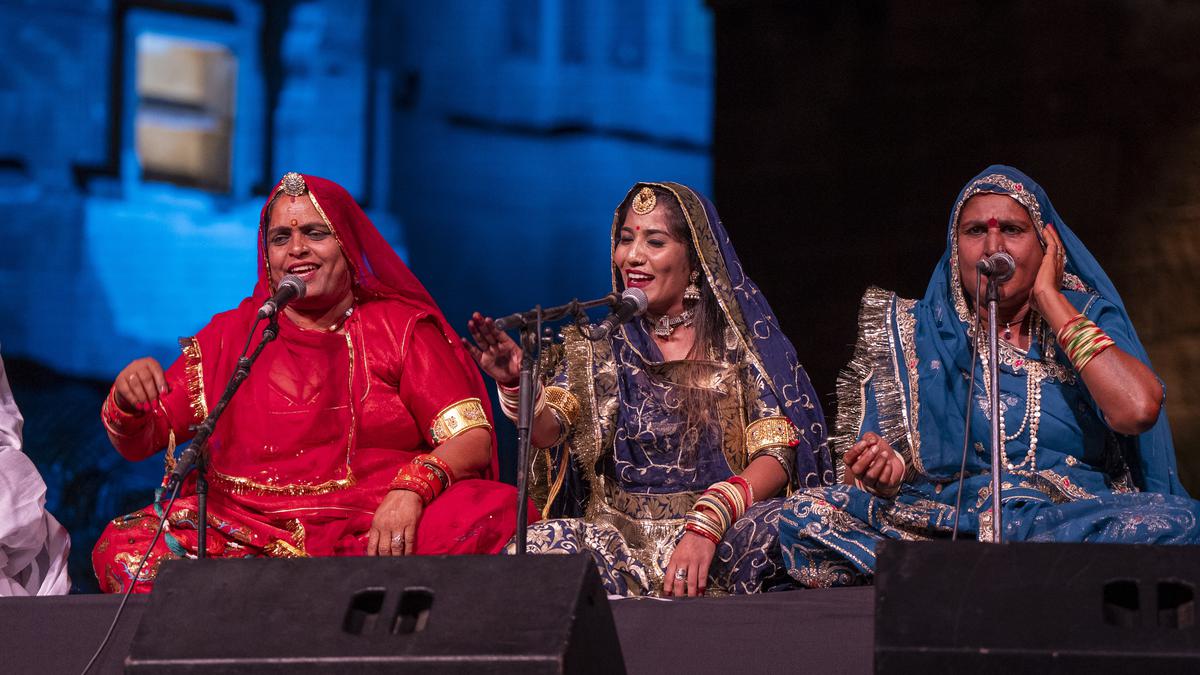
The soaring voices of the Kalbeliya singers
The Hindu
The story of Kalbeliya artistes
Legend has it that sage Kanifnath was offered a bowl (belia) of poison (kaal or death) by his spiritual mentor Gorakhnath. When he drank it to the last drop, Gorakhnath blessed Kanifnath with the ability to ingest poison and handle venomous creatures. And so, Kanifnath’s followers from around the Thar desert in Rajasthan came to be known as Kalbeliyas. They venerated snakes and made a living as snake-charmers. Often called to rescue snakes from domestic settlements, they also caught them in the wild, and earned a livelihood showcasing their ability wherever they roamed as a nomadic tribe.
“When our traditional occupation was outlawed by the Government in 1972 (with the enactment of the Wildlife Protection Act), we women replaced snakes in the Kalbeliya dance. We wear black garments and perform snake-like movements to music that our men play on the poong and other instruments. Instead of snakes, women now enthrall people with their dance; we had to become breadwinners,” says dancer Mohini Devi Kalbeliya, after performing with her niece Asha Sapera at the 2023 edition of the Jodhpur RIFF festival . Her sister, dancer Sugna Devi Kalbeliya nods in agreement.
Asha, who has grown up watching her aunts go places with their art, describes how girls in their families receive immersive education in the community’s artistic practice. “From an early age, we intuitively imbibe the art of our ancestors by watching the older women in our families,” she says. Mohini Devi adds that women of their generation “learnt songs only by listening”, as they “could not read and write.”
Titled ‘Buland aawazein kalbeliyon ki,’ the performance by the Kalbeliya artistes in the Zenana (courtyard) of the Mehrangarh Fort truly showcased their soaring voices that rendered modern amplifiers irrelevant. The power in those voices reflected the vast expanse of the desert and life on its harsh terrain. It conveyed a sense of timelessness and spoke of agency that comes from embracing one’s realities with courage and the conviction to survive.
“When we Kalbeliya women sing in a village, people from the neighbouring village also hear us,” says Mohini Devi. “We have grown up in times and places that have no technology. So, our voices naturally carry far,” she adds. Asked if she experiences the power that shines in her voice in real life, and she says “yes”, without batting an eyelid.
Mohini Devi speaks of the extensive family support that artistes in her generation relied on while touring the world as performers and cultural ambassadors. “My mother-in-law or mother would take care of the home and children. The men also pitched in, and we sometimes took them along if necessary,” she says. Mohini and Sugna Devi point to an increased interest in their art, internationally, over the last two decades. “Earlier, we only used to perform at local weddings, birthdays and other functions. We had to wait for invitations, but our art now reaches many countries,” says Sugna.
Asha is also well-travelled and much-sought after as a teacher of Rajasthani folk dances, both online and in person. Yet, she has had rather different experiences with marriage, motherhood and managing her work-life choices. “We women have to make our decisions, and take a stand about our lives,” she says, carefully sidestepping any conversation about her struggle to retain custody of her daughter or being a single mother for the last 10 years. “We live in a patriarchal society. In the villages, there is still this belief that women should not dance and sing in public. We have to fight it even now,” she says.













